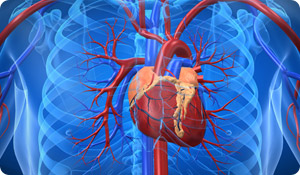
The heart is so synonymous with love that when we talk about a broken heart, it's usually an emotional response to a romantic relationship that's gone bad. But, in fact, our hearts are at the center of our physical well-being—literally. The heart, about the size of clenched fist, is a cone-shaped muscle located under the rib cage, between the lungs and behind the sternum (breastbone). Each day, your heart beats about 100,000 times, sending about 2,000 gallons of blood carrying oxygen and nutrients to all the organs in your body. A broken heart in the physical sense means that your body's organs won't receive enough blood to work normally.
Your Heart's Chambers and Valves
The inside of the heart is divided into four chambers, the right atrium, the right ventricle, the left atrium, and the left ventricle and each chamber has a one-way valve that prevents blood from flowing backwards. Each side of the heart serves separate functions. The right side of the heart takes oxygen-poor blood from the body and sends it to the lungs where it gets oxygen and releases carbon dioxide. The left side of the heart then collects the oxygen-rich blood from the lungs and sends it to cells throughout the body.
Your Heart's Electrical System
Your heart's electrical system is made up of three main parts: the sinoatrial (SA) node, located in the right atrium of the heart; the atrioventricular (AV) node, located on the interatrial septum; and the His-Purkinje system, located along the walls of the heart's ventricles. Each heartbeat is set in motion by an electrical signal from within your heart muscle. In a healthy heart, each beat begins with a signal from the SA node, the electrical impulse then leaves the SA node and travels to the right and left atria, causing them to contract, pushing blood through the open valves from the atria to the AV node. From there, the electrical pulses travel to the His-Purkinje system to all parts of the ventricles. As long as the electrical impulses are transmitted normally, the heart pumps blood and beats at a regular pace, beating on average from 60 to 100 times a minute. When problems arise with the heart's electrical system, called arrhythmias, the heart can't pump blood efficiently, causing your heart to beat too fast, too slow or irregularly.
Staying Heart Healthy
To ensure that you stay heart healthy, talk to your doctor about how often you should schedule routine heart screenings, including a check on your blood pressure and cholesterol levels. Quitting smoking, eating a healthy diet and getting regular exercise can also go a long way in keeping you heart healthy.
Sources:
nhlbi.nih.gov/health/dci/Diseases/hhw/hhw_whatis.html





